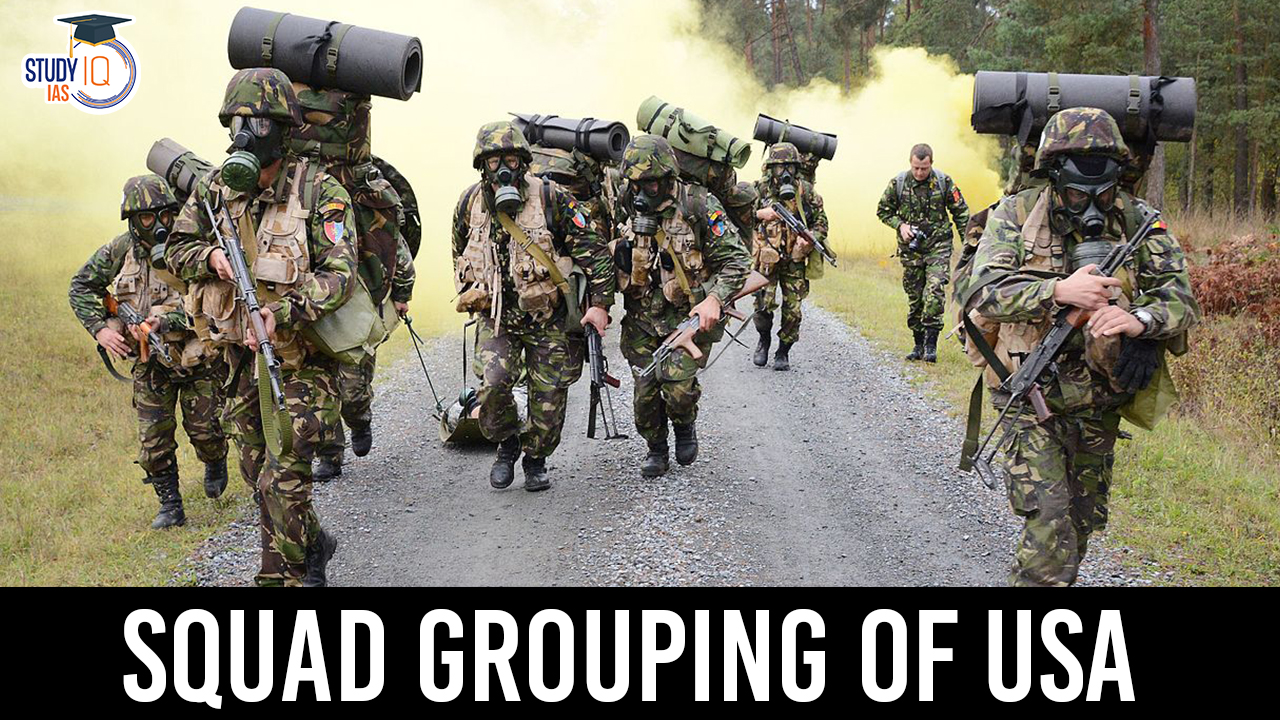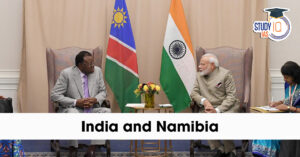Table of Contents
Context: The Philippines and its allies are working on expanding the Squad, an informal multilateral security grouping, to include India and South Korea.
The SQUAD Grouping is a strategic alliance formed by the United States in collaboration with Japan, Australia, and the Philippines. This coalition has been established with the primary objective of countering China’s growing influence and assertive actions in the Indo-Pacific region, particularly in areas such as the South China Sea. Read all about SQUAD Grouping of USA in this article.
SQUAD Grouping of USA
- SQUAD Grouping is an informal military grouping (Members – USA, Australia, Japan and the Philippines).
- It aims to exchange intelligence and hold joint military exercises and operations to counter China’s dominance in the Indo-Pacific region.
Joint Military Activities
- Since 2023, the defence forces of these four countries have conducted joint maritime operations in the Philippines’ exclusive economic zone (EEZ) in the South China Sea.
India’s Relationship with the SQUAD Alliance
- India is not a formal member of the “Squad” alliance, comprising the US, Japan, Australia, and the Philippines.
- However, India shares strategic objectives with the alliance, including countering China’s assertiveness and upholding a rules-based order in the Indo-Pacific.
- India’s participation in the Quadrilateral Security Dialogue (Quad) intersects with the goals of the “Squad” alliance, focusing on promoting a free, open, and inclusive Indo-Pacific.
- India maintains robust bilateral ties with all members of the “Squad” alliance, contributing to regional security cooperation and strategic partnerships.
- Despite engagement with like-minded nations, India prioritizes strategic autonomy and adheres to non-aligned principles in its foreign policy approach.
- India engages in broader regional forums beyond the Indo-Pacific, emphasizing connectivity, economic development, and maritime security in the Indian Ocean region.
- While not a formal member, India seeks collaboration with the “Squad” alliance’s members on specific issues of mutual interest through trilateral dialogues and joint military exercises.
Background SQUAD Grouping of USA
- China’s growing influence and military presence in the Indo-Pacific have raised concerns among regional stakeholders.
- The South China Sea, in particular, has become a hotspot for geopolitical competition and maritime disputes.
- The “Squad” alliance represents a coordinated effort to counterbalance China’s assertiveness and uphold regional stability.
Key Members of SQUAD Grouping of USA
United States
- Leading member of the alliance with significant military capabilities and diplomatic influence.
- Motivated by a commitment to uphold the rules-based international order and ensure freedom of navigation in the Indo-Pacific.
Japan
- A key regional ally of the US with advanced military technology and strategic importance.
- Shares concern about China’s maritime assertiveness and seeks to enhance regional security through joint initiatives.
Australia
- Strategic partner of the US with shared interests in maritime security and stability.
- Geographic proximity to the South China Sea enhances its role in countering China’s influence in the region.
Philippines
- Recent pivot towards Western alliances under President Ferdinand Marcos Jr.
- Firm stance on territorial claims in the South China Sea aligns with the objectives of the “Squad” alliance.
Objectives of SQUAD Grouping of USA
- Promote peace, stability, and deterrence in the Indo-Pacific region.
- Enhance military interoperability and conduct joint patrols to address security challenges.
- Bolster intelligence-sharing mechanisms and maritime security cooperation.
Challenges for SQUAD Grouping of USA
- China’s opposition to the alliance, viewing it as containment and exacerbating regional tensions.
- Potential strains due to divergent strategic interests among member nations, similar to challenges faced by the “Quad” alliance.
Implications of SQUAD Grouping of USA
- The emergence of the “Squad” alliance reshapes the geopolitical landscape of the Indo-Pacific.
- Highlights the intensifying competition between the US-led alliance and China for influence and control in the region.
- Impacts regional security dynamics and international relations, with implications for global trade and economic stability.


 India-Namibia Relations, Key Areas and S...
India-Namibia Relations, Key Areas and S...
 500% Tariff Bill in US: Concerns and Imp...
500% Tariff Bill in US: Concerns and Imp...
 India and Trinidad and Tobago: Strengthe...
India and Trinidad and Tobago: Strengthe...





















